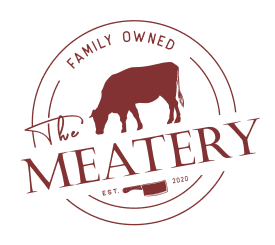Australian Wagyu Industry Overview
The Australian Wagyu industry has emerged as a global powerhouse in premium beef production, representing one of the largest Wagyu herds outside of Japan. Beginning in the 1990s with the importation of Japanese Wagyu genetics, Australia has successfully developed its own distinctive Wagyu breeding program that combines Japanese quality with Australian farming expertise.
Today, Australia boasts over 360,000 registered Wagyu cattle, with production spanning across various regions, from Queensland's tropical climate to Victoria's temperate zones. The industry has grown significantly, contributing over $1.2 billion annually.2 billion annually to the Australian economy and establishing itself as a major exporter of premium Wagyu beef to markets worldwide.
What sets the Australian Wagyu industry apart is its commitment to sustainable farming practices and strict quality control measures. Producers utilize advanced genetic tracking systems, implementing careful breeding programs that maintain the purity of Wagyu bloodlines while adapting to Australian conditions. The cattle are raised on vast pastoral lands, following strict animal welfare guidelines that ensure both the quality of the meat and the ethical treatment of the animals.
Does Australian Wagyu taste good?
Australian Wagyu is renowned for its exceptional taste profile, offering a unique combination of flavor, tenderness, and juiciness that has earned it acclaim from culinary experts worldwide. The meat is characterized by its rich, buttery taste and complex flavor notes that develop from its distinctive marbling pattern.
The taste experience of Australian Wagyu is often described as having:
- A butter-like tenderness that melts in your mouth
- Rich, complex beef flavors with subtle sweet notes
- A clean, pleasant finish that doesn't leave a heavy aftertaste
- Consistent quality across different cuts
The exceptional taste is attributed to the unique combination of Japanese genetics and Australian farming conditions. The stress-free environment, natural grazing practices, and carefully monitored feeding programs contribute to developing meat that balances the intense marbling of traditional Wagyu with the robust beef flavor that Australian cattle are known for.
Wagyu Grading System
The Australian Wagyu grading system follows the AUS-MEAT and MSA (Meat Standards Australia) guidelines, with additional specific criteria for Wagyu beef. The system primarily focuses on marbling scores, which range from 0 to 9+, with higher scores indicating more extensive marbling throughout the meat.
Key components of the grading system include:
- Marbling Score (MS): Ranging from 0-9+
- Meat Color: Assessed on a scale of 1-9
- Fat Color: Evaluated on a scale of 1-9
- Eye Muscle Area (EMA): Measured in square centimeters
Additionally, the system considers factors such as pH levels, fat distribution, and overall meat quality. This comprehensive approach ensures that Australian Wagyu maintains consistent quality standards while meeting international market requirements.
What breed of cow is Australian Wagyu?
Australian Wagyu cattle primarily originate from Japanese bloodlines, specifically the Japanese Black (Kuroge Washu) and Japanese Red (Akaushi) breeds. However, Australian producers have developed their own distinctive genetic lines through careful crossbreeding programs with local cattle breeds.
The main breed compositions include:
- Fullblood Wagyu: 100% Japanese Wagyu genetics
- Purebred Wagyu: At least 93.75% Wagyu genetics
- Crossbred Wagyu: Often combined with Angus or Holstein breeds
These breeding programs aim to maintain the superior marbling characteristics of Japanese Wagyu while incorporating traits that help the cattle thrive in Australian conditions. The result is a robust, well-adapted breed that produces high-quality beef with exceptional marbling.
Comparison Between Australian And Japanese Wagyu
While both Australian and Japanese Wagyu are premium beef products, they have distinct characteristics that set them apart. Australian Wagyu typically features:
- More robust beef flavor compared to Japanese Wagyu
- Slightly lower but still significant marbling levels
- Larger cut sizes due to different farming practices
- More competitive pricing due to larger-scale production
Japanese Wagyu, on the other hand, is characterized by:
- More intense marbling patterns
- Softer fat composition
- More delicate flavor profile
- Stricter production regulations
Both varieties maintain exceptional quality standards, but Australian Wagyu often represents a more accessible premium beef option while maintaining many of the desirable characteristics of traditional Wagyu.
What is the difference between Japanese and Australian Wagyu grading?
The Japanese and Australian Wagyu grading systems differ significantly in their approach and criteria. The Japanese system, known as the BMS (Beef Marbling Standard), uses a scale from 1-12, while the Australian system employs a 0-9+ scale.
Key differences include:
- Japanese grading focuses heavily on marbling density and distribution
- Australian grading incorporates broader quality metrics
- Japanese grades are more stringent overall
- Australian system allows for more variation in acceptable quality standards
The Australian system is designed to be more practical for international markets while maintaining high-quality standards. It provides a comprehensive assessment that considers various factors beyond just marbling, making it more adaptable to different market requirements while ensuring consistent quality control.









